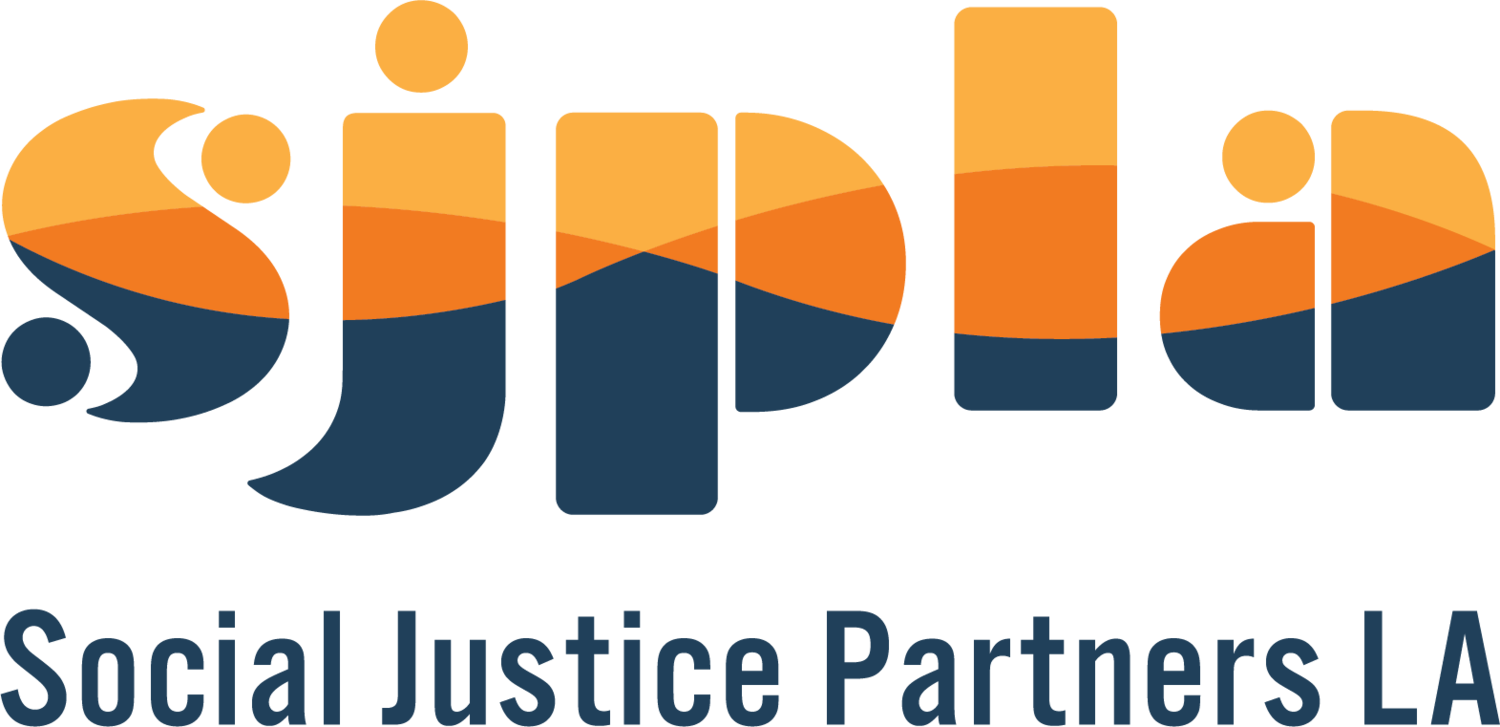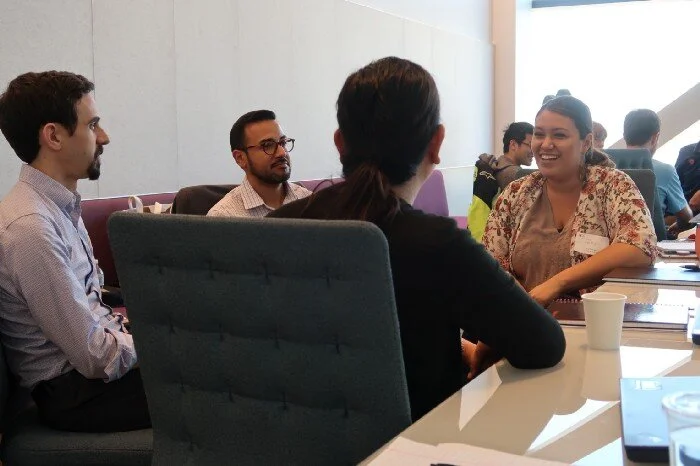Reimagining Philanthropy: Proximate Grantmaking
Think back to a time you poured your heart into an application — maybe for a job you knew was perfect for you or a college you really loved. You looked at it from every angle, thinking about how to present your best self, then you placed your fate in someone else’s hands.
That’s the life of a nonprofit grant writer. The grant writer knows how powerful the organization’s work is for their community — and how essential the funding is — and they’re poring over every word to convey that to the grantmaker.
As the Executive Director of a small nonprofit, SVP Los Angeles, our grant writing falls in my hands. I know that each application has the potential to expand or restrict our work, our staff, our impact. I’ve written countless grant applications and received the good news along with the bad, shedding tears of joy and sadness.
What’s different about our organization? We’re grantmakers, too, so we also have the privilege and responsibility of providing grant funds to nonprofits.
Funders receive dozens — sometimes hundreds — of proposals and are faced with tough decisions based on words on the page. The culture of the philanthropic sector tells us we should keep a “professional distance” from our applicants to be as objective as possible. We may do an interview or a site visit, but we try not to burden the applicant with too much beyond the written application.
For the last 13 years (first at United Way, now at SVP), I’ve been on both sides of this dance — I’ve written countless grant proposals for our work, and I’ve redistributed over a billion dollars to nonprofits over the years. Mentors in this work — along with my direct experience writing grants — have inspired me to reflect on how to wield the power of grantmaking responsibly and to question to the power structure itself.
When we started our SVP Systems Change Accelerator for early-stage systems change initiatives, we approached the application process somewhat traditionally. We created a written application with 44 questions, allowing a total of 2,100 words. The next year, we added more questions and an interview portion. We asked questions that probed for proximity, a justice frame, and a root cause analysis of the problem the organizations were seeking to solve. We thought we were honoring the applicants’ work by asking questions that honored their life experiences and approach.
Ironically, in our efforts to find the candidates with deep proximity to their systems change work, we weren’t centering proximity and equity in our own process.
It was time to turn the lens on our own practices. As Bryan Stevenson says: “For those who want to change the world, the first step is they must get proximate to the people who are suffering, who are being excluded, who are being disfavored, and who are being incarcerated. We cannot change the world from a distance.” This applies to us as grantmakers, too.
In keeping a professional distance from our applicants, we were compromising our values of social justice, proximity, and community. Our most important job as an organization is to live into those core values in our policies, practices, and ways of being.
Edgar Villanueva, in his book Decolonizing Wealth, speaks to the opportunity of rebuilding philanthropy with a high priority on relationships and interconnection. “We know what spaces and organizations look like, feel like, and function like when they are inspired by the colonizers’ principles of separation, competition, and exploitation. How would they be different if they were based on principles like integration and interdependence, reciprocity and relationship?”
After reflecting on our grantmaking process, we made the shift from asking ourselves: “Who is a best-fit applicant based on this process?” to asking “How can this process support the best-fit applicants?”
We sought out the support of Christine Ortiz at Equity Meets Design to help us think through “designing at the margins” — designing an application process from the perspective of those who would not have succeeded in our more traditional grant writing process or who may not even apply. We told her we wanted the process to be value-add for the applicants and help us draw in the most groundbreaking, proximate leaders. She shared a mind-blowing idea: hold a practical workshop rather than ask for in-depth written applications. We instantly knew this was our path forward.
We recognized in our traditional application process what Tema Okun refers to as “worship of the written word,” a signal of white supremacy culture. The written application is something we had never questioned, but we realized we had excluded and marginalized applicants we very much wanted to work with — those who may not have the resources for a professional grant writer, those for whom English is not their primary language, or those who make tough choices every day to testify at a hearing or connect with their community rather than spend 8–10 hours poring over our application.
We completely revamped our process. We created an eligibility questionnaire with just 16 brief questions that took no more than 20 minutes to complete. We then invited every eligible applicant to a full-day workshop where we facilitated the strategy session that was previously day one of our program. Our intention was to share our core tools with a broader community of leaders, in hopes that it would be value-add to their work, even if they were not selected for the program.
I was struck by how nervous I felt at the start of the workshop. I was humbled to stand in front of a room of social justice warriors and eager for their feedback about our new experiment.
By getting out from behind our desks, we opened ourselves to authentic relationship, and we invited the applicants’ critique and evaluation of us, too. There is, to be sure, vulnerability in proximity.
At each table, we had coaches (executive coaches, nonprofit alums of our programs, and other entrepreneurial leaders) who were there to support applicants through the strategy process. We sat beside them as they grappled with their problem statements, gave each other powerful feedback, and mapped out their strategy as a team.
After six hours together, the coaches huddled and selected 10 organizations for this year’s program. For the 14 that were not a fit, we let them know that it was a “not now” rather than a “not ever.” Some of them were too early in their initiatives, while others found the workshop inspired them to reconsider how they approached their work entirely.
We asked participants to complete an anonymous online survey following the workshop, and here’s what we heard:
100% of applicants felt the workshop added value to their initiative
91% of applicants preferred the workshop over a written application
22% of applicants would not have applied had we used a written application
Participants most appreciated the chance building relationships with other nonprofits and the space for deep exploration
The process was also hugely value-add for us as a grantmaker:
We grew our SVP community by creating transformational rather than transactional relationships
We aligned with our mission and values in creating space for connection and strategizing with more organizations
We got to know applicant organizations much more fully than we could in a written application, greatly aiding our decision-making process
We increased the applicant pool, with double the applicants from prior years
Our coaches had a hands-on opportunity to engage with nonprofits, rather than spending hours reading proposals in isolation
To our colleagues in philanthropy, I can’t recommend this process strongly enough as a win/win for grant seekers and grantmakers. More than this though, I encourage you to think about what proximity to your community looks like and how we as a sector can get out from behind our desks to create transformational relationships. Let’s question the power structure and practices of traditional philanthropy.
To our colleagues in the nonprofit world, I see you, and I’m with you. May we thrive — financially and beyond — walking alongside one another in this work.



